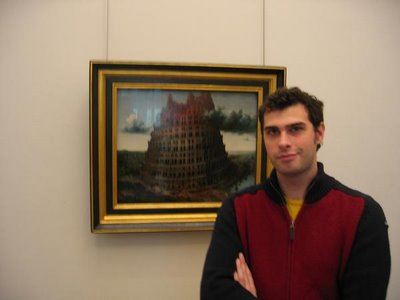cool drink of nanowater
I've always been rather skeptical of neo-Malthusians when they talk about wars over food or water. Not because of the lasting goodness of human nature, just doesn't seem to gel with current geopolitics. Food is something we have a surplus of and can store for long periods with modern techniques. Clean water can be more of a commodity, and is more vital, but I still had trouble thinking with the Water War scenario. But we could easily be motivated to fight over another liquid, petroleum, so why not water? Well even countries that have very little freshwater resources can still extract the salt from seawater, like Saudi Arabia or Israel. But desalinization technology has been drastically expensive for developing nations, while most of the world's population has trouble finding clean drinking water and is under threat from water-born micro-organisms. Reverse osmosis, the current technology used in desalinization requires enormous pressures and expensive filtering mediums.
Now scientists at the Lawrence Livermore National Laboratory in Berkeley, California have developed a carbon nanotube membrane which forms the basis for inexpensive desalinization. The nanotubes are 50,000 times thinner than a human hair and act as pores through a silcon substrate. Only six water molecules could fit across the diameter of one tube.
"The gas and water flows that we measured are 100 to 10,000 times faster than what classical models predict," said Olgica Bakajin, the Livermore scientist who led the research. "This is like having a garden hose that can deliver as much water in the same amount of time as fire hose that is 10 times larger."The nanotube membrane has additional particle separating capabilities and could be in future refinery and recycling plants. Take this passage from Neal Stephenson's The Diamond Age :
The lilies sprouted from a stadium-sized cut-crystal vase, the Diamond Palace, which was open to the public. Tourists, aerobicizing pensioners, and ranks of uniformed schoolchildren marched through it year in and year out, peering through walls of glass (actually solid diamond, which was cheaper) at various phases of the molecular disassembly line that was Source Victoria. Dirty air and dirty water came in and pooled in tanks. Next to each tank was another tank containing slightly cleaner air or water. Repeat several dozen times. The tanks at the end were filled with perfectly clean nitrogen gas and perfectly clean water.
The line of tanks was referred to as a cascade, a rather abstract bit of engineer's whimsy lost on the tourists who did not see anything snapshot-worthy there. All the action took place in the walls separating the tanks, which were not really walls but nearly infinite grids of submicroscopic wheels, ever-rotating and many-spoked. Each spoke grabbed a nitrogen or water molecule on the dirty side and released in after spinning around to the clean side. Things that weren't nitrogen or water didn't get grabbed, hence didn't make it through. There were also wheels for grabbing handy trace elements like carbon, sulfur and phosphorus; these were passed along smaller, parallel cascades until they were perfectly pure. The immaculate molecules wound up in reservoirs. Some of them got combned with other to make simple but handy molecular widgets.
Español | Deutsche | Français | Italiano | Português| Ch| Jp| Ko







0 Comments: